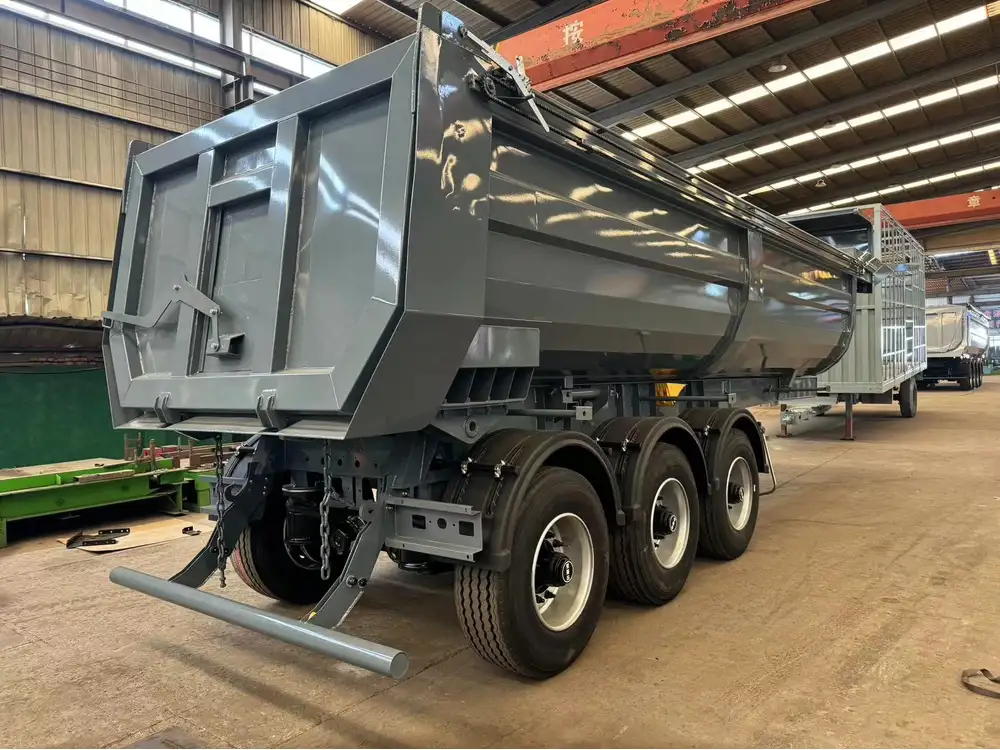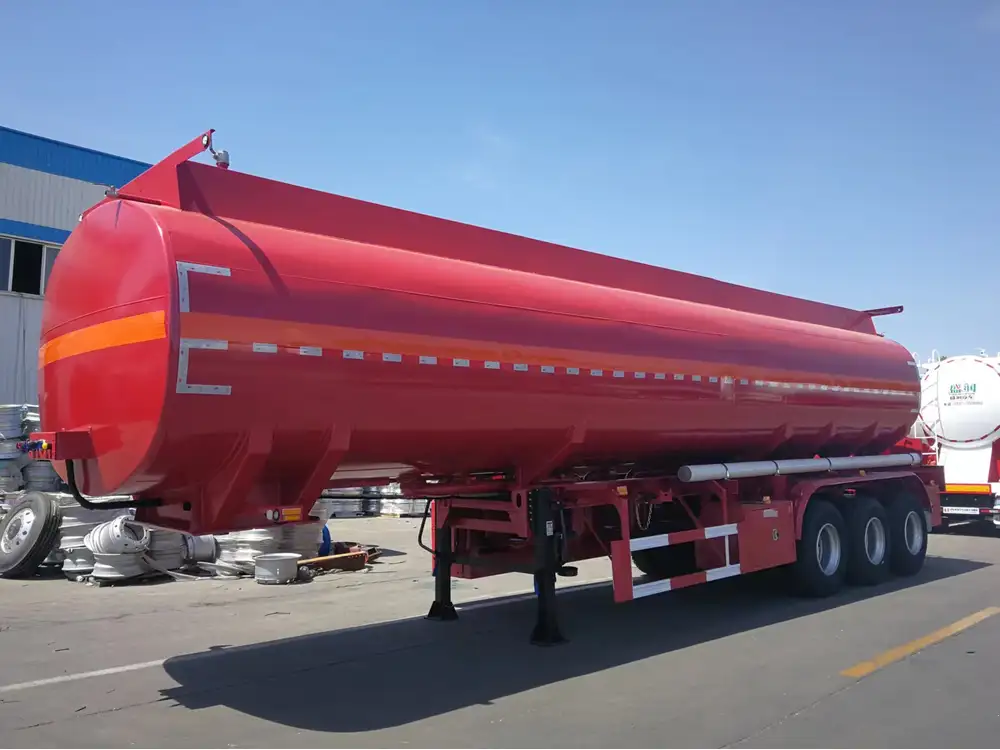When contemplating the acquisition of a semi-trailer, potential buyers must navigate a labyrinth of options, specifications, and accessories. Selecting the right semi-trailer is a significant investment that requires careful consideration of multiple factors to ensure long-term satisfaction and operational efficiency.
Understanding Your Needs
Before exploring the types of semi-trailers available, it’s essential to identify your specific needs. Are you transporting freight, machinery, or livestock? The type of goods you plan to haul will greatly influence your choice of semi-trailer.
Types of Semi-Trailers
| Trailer Type | Primary Use | Key Features |
|---|---|---|
| Flatbed Trailers | General cargo | Open platform, versatile loading |
| Enclosed Trailers | Sensitive goods | Protection from elements, security |
| Refrigerated Trailers | Perishable goods | Temperature control |
| Drop Deck Trailers | Height restrictions | Low profile for taller loads |
| Lowboy Trailers | Heavy equipment transport | Low height, robust construction |
| Tanker Trailers | Liquids | Cylindrical shape, special lining |

Key Factors to Consider
1. Payload Capacity
Determining the payload capacity is one of the first steps in choosing a semi-trailer. This indicates the maximum load the trailer can carry, which must comply with legal roadway limits. Check the Gross Vehicle Weight Rating (GVWR) and ensure it aligns with your cargo requirements.
Tip: It’s wise to select a semi-trailer with a slightly higher capacity than your estimated maximum load to allow for additional flexibility in operations.
2. Material and Construction
The materials used in the construction of the semi-trailer play a crucial role in its durability and overall performance.
- Steel: Known for its strength and resilience, steel trailers can handle heavier loads but may be prone to rust if not treated properly.
- Aluminum: Lightweight and resistant to corrosion, aluminum trailers generally improve fuel efficiency but may cost more upfront.
Comparison Table: Steel vs. Aluminum Trailers
| Feature | Steel Trailers | Aluminum Trailers |
|---|---|---|
| Weight | Heavier | Lighter |
| Cost | Generally lower | Generally higher |
| Durability | High (rust treatment needed) | High (rust-resistant) |
| Fuel Efficiency | Lower | Higher |

3. Suspension System
The suspension system impacts the ride quality of the trailer and the safety of the cargo. There are two primary types of suspension systems:
- Spring Suspension: Traditionally used, it is robust but may not provide the smoothest ride for sensitive cargo.
- Air Ride Suspension: Provides better shock absorption and a smoother ride, ideal for fragile goods.
4. Tire and Axle Configuration
The tire and axle configuration affects a trailer’s stability, handling characteristics, and load distribution.
- Number of Axles: More axles can handle more weight and provide better stability. Common configurations include single, tandem (two), and tridem (three) axles.
- Tire Type: Choose between radial and bias-ply tires, with radial tires generally offering better traction and wear characteristics.
5. Brake System
A reliable braking system is paramount for safety. Consider the following:
- Air Brakes vs. Hydraulic Brakes: Air brakes are more commonly used for larger trailers due to their effectiveness in high-capacity applications.
- Anti-lock Braking System (ABS): Essential for preventing wheel lock-up during braking, maintaining control under various conditions.

6. Trailer Size and Dimensions
Different operations require different trailer sizes. Analyze the following:
- Length: Most semi-trailers range from 28 to 53 feet. Ensure you’re compliant with local and state regulations regarding trailer length.
- Width and Height: Standard widths are typically 8.5 feet, with height specifications that may vary depending on the type of cargo.
7. Additional Features
As a buyer, look for customized features that might suit your specific needs:
- Loading Ramps: Indispensable for loading equipment easily onto the trailer.
- Side Rails and Tarps: Helpful for securing items and preventing damage during transit.
- E-Tracks and Cargo Control: Essential for maximizing space and securely fastening loads.
8. Brand Reputation and Warranty Considerations
Investigate the reputation of the manufacturer or brand. A well-established brand often signifies reliability and competent customer service. Moreover, consider the warranty offered with the purchase. A robust warranty can provide peace of mind, covering potential defects or issues post-purchase.

9. Regulatory Compliance
Ensure that the semi-trailer complies with industry regulations, including local, state, and federal guidelines regarding weight limits, dimensions, and environmental standards.
- Check DOT Compliance: Make sure your selected trailer meets Department of Transportation (DOT) standards to avoid fines and legal issues.
Pricing Considerations
Pricing is crucial when considering a semi-trailer. Understanding market rates can aid in making an informed decision.
Factors Affecting Pricing
- Type and Specifications: The type of trailer and its specifications will significantly influence the cost.
- New vs. Used: A new trailer comes with a warranty but a higher price tag. Used options can save money but check for wear and tear.
- Financing Options: Explore financing options through manufacturer promotions or loan institutions that specialize in commercial vehicle financing.

Sample Pricing Guide
| Trailer Type | Average Price Range |
|---|---|
| Flatbed Trailers | $25,000 – $50,000 |
| Enclosed Trailers | $30,000 – $75,000 |
| Refrigerated Trailers | $35,000 – $100,000 |
| Specialized Trailers | $40,000 and up |
Researching and Testing Before Purchase
Prior to finalizing a purchase, conduct thorough research and, if possible, test the semi-trailer. This includes:
- Inspecting the Trailer: Check for any signs of damage, wear, or substandard materials.
- Conducting a Test Drive: If you can, take the trailer for a test run to evaluate its performance and ease of handling on the road.
Questions to Ask the Seller
- What is the maintenance history of the trailer?
- Are there any remaining warranties or service agreements?
- Can you provide references or testimonials from previous buyers?

Additional Resources and Support
Once you have purchased your semi-trailer, remember that the relationship with the manufacturer doesn’t end there. Look for additional resources, like:
- Maintenance Tips: Regular maintenance is crucial for longevity. Familiarize yourself with routine checks and schedules.
- Support Services: A manufacturer that provides solid customer support can be invaluable, especially in emergencies.
Conclusion
The purchase of a semi-trailer is a pivotal decision that will impact your business’s effectiveness and efficiency. By critically analyzing your needs and the various factors that influence trailer selection, you position yourself to make an informed purchase that benefits your fleet and fulfills your operational goals. Benchmarking your decisions against the insights provided in this guide ensures that you’re equipped with knowledge to navigate the vast world of semi-trailer options, steering clear of common pitfalls and issues that can plague inexperienced buyers. Take your time, do your homework, and drive your investment toward success.



